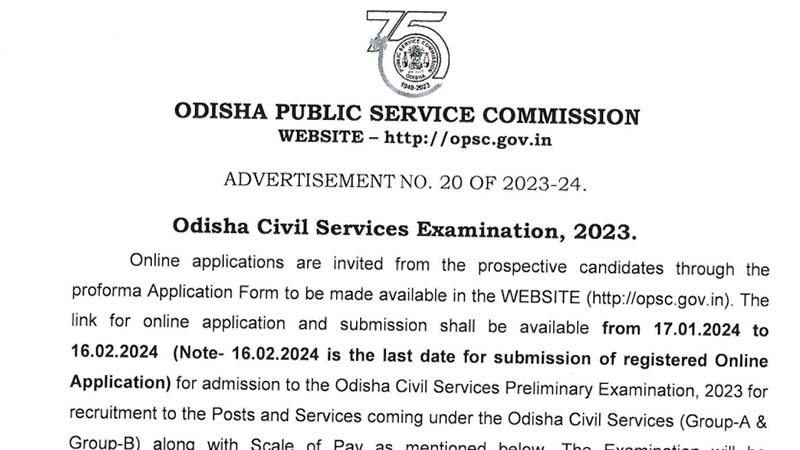Paper-I
Section – A
Surveying: Chain survey, compass survey, plain table survey, computation of area, levelling, contour survey, land levelling, design, methods, earth work computation, land grading, land shaping, layout of fields, irrigation and drainage systems planning.
Fluid mechanics and irrigation: Hydraulics of flow, open channel flow, steady and unsteady, uniform and non uniform, laminar and turbulent, Reynold’s number, Froude number, critical depth, hydraulic jump, Chezy’s and Manning’s formula. Soil-water-plant relationship, soil moisture types and its measurement, movement of water in soil, evaporation, transpiration, evapotranspiration, water requirement of crops, filed capacity, wilting point, available soil moisture, consumptive use-methods of estimation, irrigation efficiencies, irrigation scheduling, irrigation methodsgravity and pressure irrigation systems and their adoptability, micro irrigation system, measurements of irrigation water, irrigation planning and farm water management, earthen channel, lined channel, lining materials, culverts, inverted siphons, under ground pipe irrigation management, participatory irrigation management, irrigation pumps types and suitability, selection of pumps installation of pumps, care and maintenance of pumps.
Drainage: Water logging problems in crops, drainage co-efficient, role of drainage in cropped area, drainage investigation and selection, open drains on farm, field surface drainage, sub-surface drainage systems, pipe drainage interceptor drain, mole drain, tubewell drainage, bio drainage, saturated hydraulic conductivity, salinity control and drainage water-utilization.
Section – B
Groundwater & surface hydrology; wells and pumps : Hydrologic cycle measurement of rainfall, evaporation, infiltration, estimation of runoff, factors affecting runoff, computation of volume of runoff and peak flow, unit hydrograph. Occurrence of ground water and its; movement, aquifer types, well screens, gravel packing, radius of influence, transmissibility, basin-wide ground water development, ground water recharge, artificial recharge, ground water investigation, well hydraulics, types of shallow and deep tube wells, their method of construction, design of tube wells and open wells, multiple well systems, boring and deepening of open wells, sealing of brackish and saline aquifer horizons, well development, draw down-yield relationship.
Soil conservations and Watershed Management: Soil erosion, types, factors affecting different kinds of crosion, methods to control soil crosion-biological control measures, contour farming, strip cropping, mixed cropping, inter cropping, mulching, mechanical control measures-their suitability for different conditions-design of contour ditches, contour bunds, graded bunds, bench terraces, contour stone wall-gully control structures vegetative control method-brush dams, loose rock dam, drop spillway, chute spillway and drop inlet spillway, universal soil loss equation, vegetated waterways-its design. Watershed concept, land capacity classification, objectives of watershed management-selection of priority areas, management of natural resources, water harvesting, farm pond, percolation pond, runoff, farming systems, catchment area treatments, watershed-based soil and water conservation, integrated watershed development, role of remote sensing and GIS in watershed planning, development and evaluation.
Farm structures: Building Materials, bearing capacity of soil, factor of safety, types of masonary foundations, basement and superstructure, types of roofs, building plan and estimation, planning of farmstead and farm residence, farm fencing, farm gates, farm roads, dairy farm, poultry house and equipments, silo, feed storage structure, grain storage structure, storage structure for semi-perishables, threshing floor, drying floors, storage structure for fertilizer and seeds.
PAPER – II
Section – A
Farm Power and Machinery: Agricultural mechanization and its scope. Sources of farm power. History of tractor development. Thermodynamic-cycles, Thermal efficiency, Classification, construction and working principles of internal combustion (IC) engines, fuels, ignition, lubrication, cooling, governing system of I.C. engines, Different types of tractors and Power tillers, their manufacturers in India & their specifications, power transmission, ground drive, power take off (PTO), differential and control systems. Operation and maintenance of farm machinery, farm tractor and engines. Traction theory, mechanics of farm tractor chassis, weight transfer, human factors in tractor design. Different methods of locating C.G. of tractor. Primary and secondary tillage equipments. Sowing planting, inter culture, spraying, dusting, harvesting and threshing equipments. Mowers and combines. Earthmoving and land development machinery like scrapers, draglines, bulldozers and power buckets. Dynamometers their types and principles of prony brake dynamometer used for power measurement, cost estimation for hiring of tractors. Ergonomics of man-machine-system. Haulage of agricultural and forest produce, land clearing.
Energy: Energy requirements in agricultural, different renewable energy sources, energy from the sun and wind, biomass gasification, producer gas and bio-gas for running I.C. engines and for electric power generation. Energy efficient cooking stoves and alternate cooking fuels, use of electricity for agriculture and agro industrial application.
Section – B
Agricultural Process Engineering: Post Harvest Technology of crops and its scope, unit operations in processing of cereals, oil seeds and pulses. Working principles of equipments for milling, mixing, cleaning, grading, drying and storage of cereals, pulses and oil seeds, moisture content determination, physical properties, psychometry , energy and material balance, solvent extraction, process flowchart, properties of fruits and vegetables, food texture and theology, process parameters and equipment for sorting, washing, handling, peeling, slicing, blanching, mixing and handling, chilling, packaging, transportation, storage and preservation technology, properties of diary and food products. Process flow chart for product manufacturing. Working principles of equipments for receiving, pasteurization, sterilization, homogenization, filling and packaging, butter manufacturing, evaporation, drying, freezing, juice extraction, filtration, thermal processing. Material handling equipments – belt and screw conveyors, bucket elevators, their capacity and power requirement. Application for computer techniques in design optimization. Waste and byproduct utilization of rice husk, rice bran, plant residues and coir pith.
Electronics and Instrumentation: Electronic devices and their characteristics, study of rectifiers, amplifiers, Oscillators, operational amplifiers, multivibrators, Digital circuit, sequential and combinational systems. Introduction to micro processor. Programming of micro processors and data acquisition and control of Agricultural Engineering processes. Generalized instrumentation system. Absolute and secondary measurements. Accuracy, precision, sensitivity and errors in measurements. Primary sensors and transducers, measuring instruments for current, voltage, electrical power flow, pressure, temperature,
humidity, strain, force, torque and energy.
